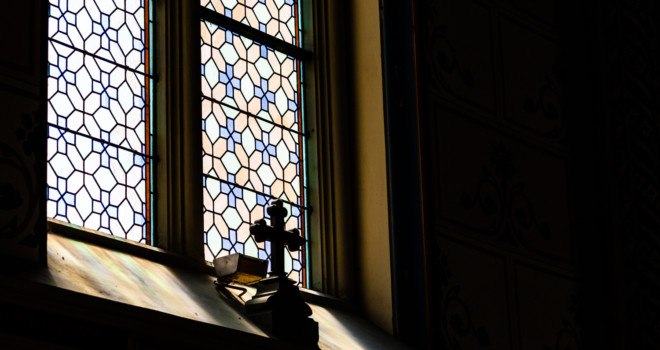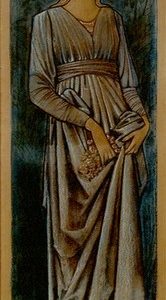The one thing God cannot do is contradict Himself. This is proof of His omnipotence, for as Truth, to lie would be to cancel Himself out. Consequently, when there seem to be contradictions in His inspired
Scriptures, the task for mankind is to figure out why apparent contradictions are really hidden consistencies.
For instance, God told Abraham: “Do not be afraid” (Gen. 26:24), and when, as Christ, He rose from death, He told the women at the tomb the same thing (Matt. 28:10). How is it, then, that “The fear of the Lord is the beginning of wisdom” (Prov. 9:10)? And why does God say, “My covenant with him was one of life and peace, and I gave them to him. It was a covenant of fear, and he feared me” (Mal. 2:5)? And why is the fear of the Lord one of the “gifts” of the Holy Spirit?
The apparent contradiction is reconciled by God Himself: “And now, Israel, what doth the Lord thy God require of thee, but to fear the Lord thy God, to walk in all his ways, and to love him, and to serve the Lord thy God with all thy heart and with all thy soul” (Deut. 10:12).
That love is born of holy fear, or what we would call “awe,” and it is an awe as transportingly joyful as the dark fear—which “perfect love casts out” (1 John 4:18)—is frightful.

Dread, or “servile” fear, in Hebrew is pachad. Synonymous with that is yir’ah, but that can also mean “holy wonder” or “awe.” Jesus Christ, who is the incarnation of the love that uttered all creation into existence, casts out the terror of pachad and infuses the soul with the bliss of yir’ah. In the Eucharist, the Kyrie eleison (Lord have mercy!) is penitential in tone but only because it is inspired by awe at God’s majesty. It is an acclamation and not a gasp of horror. It was with joy that St. Thomas cried out, “My Lord and my God!” at the sight of Christ’s wounds (John 20:28).
Like breathing, which we take for granted even though we would die without it, there never is a moment when the Holy Mass is not being prayed somewhere in the world. To take it for granted is to forsake our wondering awe at knowing that Christ grants it. If we are faithful to the Holy Spirit’s gift of holy fear, each Mass should be as our first Mass, our last Mass, and our only Mass.
Without holy fear, there would be only dread. Perhaps that explains why our culture is so burdened with “phobias” and so unacquainted with awe at our Eucharistic Lord. “And behold, I am with you always, to the end of the age” (Matt. 28:20).
Patience
The child in the backseat asks “Are we there yet?” and the psalmist pleads “Usquequo, Domine? (How long, O Lord? [Psalm 13:1]). Patience is a difficult virtue. As we prepare to observe the seventieth anniversary of the Normandy Invasion, we know that only those who were alive then can describe the excruciating months and days of waiting for what President Franklin D. Roosevelt called the “poignant hour.”
Our Lord was patient with His apostles: “Have I been with you so long, Philip, and do you still not understand?” (John 14:9). In the days between His Ascension and Pentecost, He enjoined His followers to be patient: “And being assembled together with them, he commanded them not to depart from Jerusalem, but to wait for the Promise of the Father” (Acts 1:4).
Patience is waiting without complaint. After the Resurrection, those who had been great complainers early on no longer murmured, but filled the days with great rejoicing, singing, and praying in anticipation of the unspecified day (“not many days” was all the Master said) when the Holy Spirit would give birth to the Church. That came to pass on the fiftieth day after Our Lord’s Resurrection. The Resurrection had coincided with the ancient Jewish feast of the First Fruits (Lev. 23:15–16). Christ had risen on that feast, becoming the fruition of salvation history. The Holy Spirit then came down on Mary and the apostles to fill their hearts on the Jewish feast of Pentecost—which celebrated the giving of the Law on Mount Sinai. Now the letter of that Law would be fulfilled by the Spirit who gives life to the Law.
The Jews calculated the date of Pentecost from the first Sabbath after Passover. Thus, Pentecost followed Christ’s Resurrection not fifty but forty-nine days later, and the ten days of waiting following the Ascension were actually nine. In the Levitical system, however, the ninth day marks the conclusion of a feast and the start of a new day lived in consequence of waiting for it. So novenas are nine days of prayers in anticipation of the tenth day.
The “relativity” of natural time is harder to understand than the relativity of moral time. For instance, one hour of pain seems much longer than one hour of pleasure, and the years of waiting for marriage are not as nerve-racking as the few minutes before the wedding. In each instance, the exercise of patience ceases to be a burden, knowing that the anticipated outcome will be realized. St. Peter was an impatient man until the Resurrection. Then he embraced the truth of eternity when he embraced the Risen Lord, and that made all the difference. He came to understand that “with the Lord one day is as a thousand years, and a thousand years are as one day” (2 Pet. 3:8).
So, patience is based on trust, and trust changes endurance into joy: “For the revelation awaits an appointed time; it speaks of the end and will not prove false. Though it linger, wait for it; it will certainly come and will not delay” (Hab. 2:3).
✠
Editor’s note: This article is from a homily found in A Year with Fr. Rutler, a four volume set of Fr. George Rutler’s homilies and writings for the Church year. It is available as a paperback or leather edition from Sophia Institute Press.













